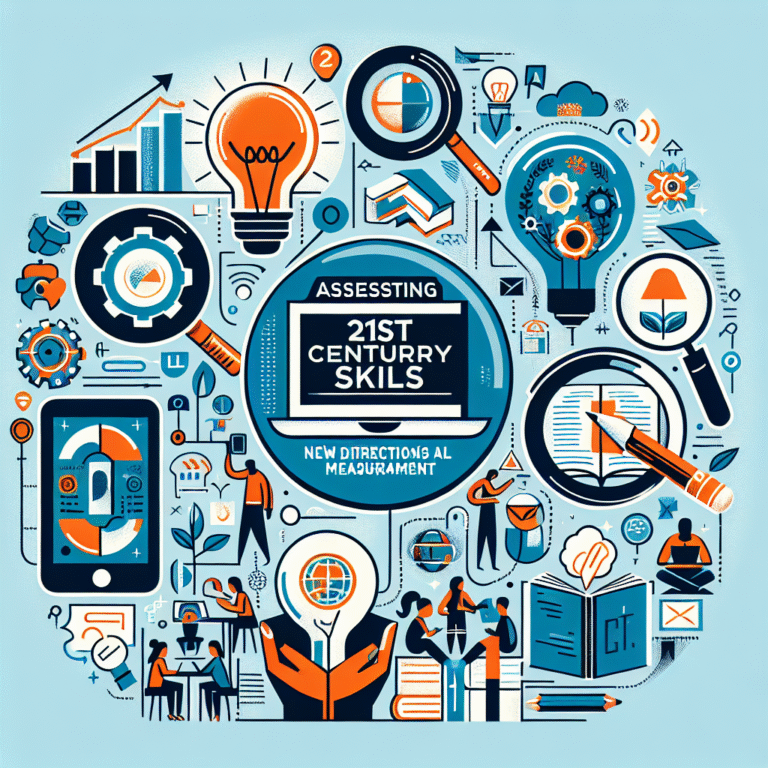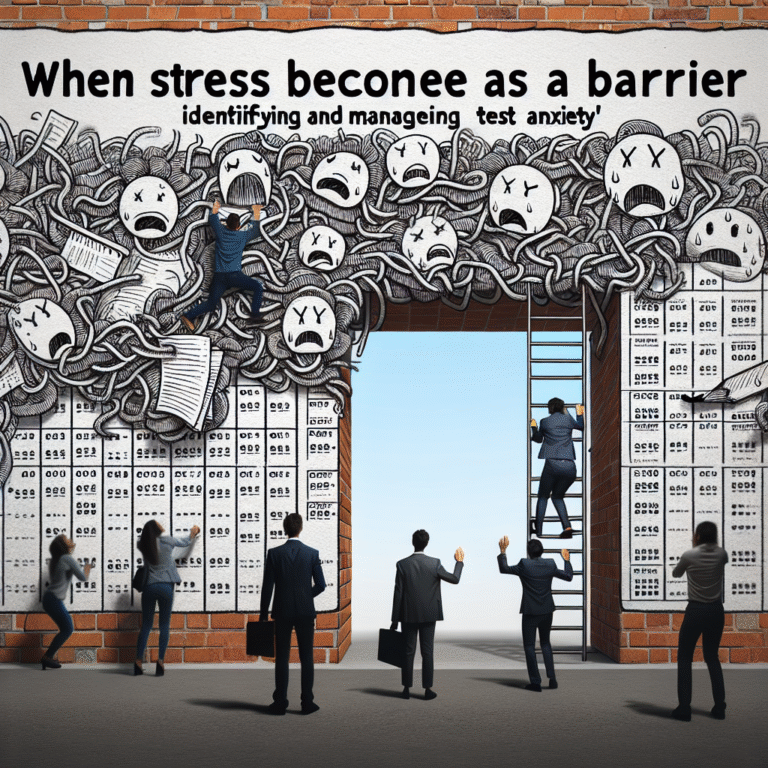
Introduction
Imagine walking into a room where everyone believes you can achieve great things. Suddenly, you feel a surge of confidence, and your performance amplifies. This is not just a coincidence—it’s the expectancy effect at play. In a world increasingly driven by perception, understanding the intricate dance between expectation and outcome is crucial. Expectations Matter: Unpacking the Science Behind the Expectancy Effect reveals how our beliefs shape our realities, and it draws upon a wealth of scientific evidence, case studies, and relatable examples to demonstrate this powerful phenomenon.
Understanding the Expectancy Effect
What is the Expectancy Effect?
The expectancy effect, often referred to as the placebo effect in clinical settings, occurs when an individual’s expectations influence their performance or sensations. It stems from the broader field of psychology, where researchers have long studied how beliefs can alter perceptions, emotional states, and even physiological responses.
The Role of Beliefs
Beliefs act as powerful motivators. When you anticipate positive results, your behavior usually aligns with those expectations. In contrast, negative expectations can stunt potential and create self-fulfilling prophecies.
Table 1: The Impact of Expectations
| Expectation Type | Impact on Performance |
|---|---|
| Positive Expectation | Enhanced performance and motivation |
| Neutral Expectation | Consistent but unremarkable results |
| Negative Expectation | Decreased performance and self-doubt |
Historical Context
The expectancy effect isn’t a new discovery. Early psychologists like William James and later researchers, such as Rosenthal and Jacobson, demonstrated the phenomenon through systematic studies. Their works highlight how teacher expectations impact student performance—a foundational aspect of education that still resonates today.
Case Studies in the Expectancy Effect
1. The Rosenthal-Jacobson Study
Background: In the 1960s, psychologists Robert Rosenthal and Lenore Jacobson conducted an iconic study in a California elementary school. They informed teachers that certain students were "academic bloomers" based on dubious intelligence tests.
Findings: Those labeled as such showed significant improvement, dazzling educators and peers alike—despite no actual difference in their initial capabilities.
Analysis: This case study underscores Expectations Matter: Unpacking the Science Behind the Expectancy Effect, illustrating that even unfounded expectations can yield remarkable outcomes.
2. The Placebo Effect in Medicine
Background: The placebo effect is perhaps the most well-known application of the expectancy effect in medicine. When patients believe they are receiving treatment—regardless of whether it is real or a placebo—they often report feeling better.
Findings: Numerous studies confirm that up to 30% of patients experiencing pain relief can be attributed to the placebo effect, heavily influenced by their expectations of treatment efficacy.
Analysis: This dynamic reinforces the idea that human belief systems are intricately linked to health outcomes, demonstrating the profound relevance of the expectancy effect in healthcare.
The Mechanics of Expectation
Psychological Mechanisms at Play
Understanding how expectations influence us requires delving into cognitive psychology. Two key processes contribute to the expectancy effect:
-
Cognitive Dissonance: This theory posits that if our beliefs and actions are contradictory, we experience psychological discomfort. Individuals often change their beliefs to align with their actions, thereby fostering a self-affirming cycle.
- Confirmation Bias: This occurs when people favor information that confirms their pre-existing beliefs, thereby reinforcing expectations and guiding their actions toward expected outcomes.
Neurobiological Insights
Neuroscience has revealed that expectations can alter brain activity, particularly in regions associated with reward and motivation. Functional MRI studies show individuals expecting rewards exhibit heightened activation in the ventral striatum, suggesting a neural basis for the expectancy effect.
Chart 1: Neurobiological Responses to Expectations
- Visual representation of brain activity changes in response to varying expectation levels.
Real-World Applications of the Expectancy Effect
Education
Expectations in educational settings profoundly affect student outcomes. When teachers believe in their students’ capabilities, those students are likelier to succeed. Techniques to incorporate high expectations, such as positive reinforcement and growth mindset encouragement, can create empowering learning environments.
Sports
Athletes often thrive on expectation. Coaches who foster a positive outlook about an athlete’s potential directly influence performance. Notable is the 1996 Atlanta Olympics, where many athletes attributed their success to self-made expectations and mental preparation.
Workplace Dynamics
In corporate settings, leadership style significantly impacts employee performance. Leaders who express high expectations generally see improved team outcomes due to increased motivation and morale.
Overcoming Negative Expectations
While expectations can uplift us, they can also hinder progress. Strategies for overcoming negative expectations include cognitive restructuring, mindfulness practices, and targeted interventions to reshape beliefs.
-
Cognitive Restructuring: This therapy technique helps individuals identify and challenge irrational beliefs, replacing them with healthier, more positive outlooks.
-
Mindfulness Practices: Cultivating mindfulness allows individuals to absorb experiences without preconceived judgments, reducing the burden of negative expectations.
- Goal Setting: Clearly defined and achievable goals can redirect focus from fear of failure to successful achievements.
Conclusion
Expectations shape our realities in ways we’re just beginning to comprehend. Expectations Matter: Unpacking the Science Behind the Expectancy Effect illustrates how our beliefs can determine outcomes in education, healthcare, sports, and beyond. By nurturing positive expectations in ourselves and others, we can unleash tremendous potential.
Motivational Takeaway
Harnessing the power of expectations is not merely a theoretical exercise—it’s transformative. As you move forward, recognize that your beliefs can either build walls or create pathways to success. Choose wisely, nurture positivity, and let your expectations guide you toward greatness.
FAQs
1. What is the expectancy effect?
The expectancy effect occurs when individuals’ beliefs or expectations lead to changes in their performance or perception, often resulting in self-fulfilling prophecies.
2. How does expectation influence performance in education?
In education, teachers’ expectations can significantly affect student outcomes, with higher expectations leading to improved performance, motivation, and engagement.
3. Can the expectancy effect be negative?
Yes, negative expectations can lead to poorer performance and outcomes, as individuals may internalize doubts or fears, creating a self-fulfilling cycle of disappointment.
4. How can I foster positive expectations in myself?
Employ techniques like setting realistic goals, practicing mindfulness, and engaging in cognitive restructuring to challenge negative beliefs, thereby fostering a more positive mindset.
5. Is the placebo effect related to the expectancy effect?
Absolutely! The placebo effect is a prime example of the expectancy effect, where individuals experience actual improvements in health due to the belief that they are receiving effective treatment.
With a comprehensive exploration of the expectancy effect, its mechanisms, and real-world applications, this article serves as a guide to leveraging the power of expectation in everyday life. Whether in education, health, or the workplace, understanding that Expectations Matter: Unpacking the Science Behind the Expectancy Effect can unlock new potentials for success and fulfillment.


















